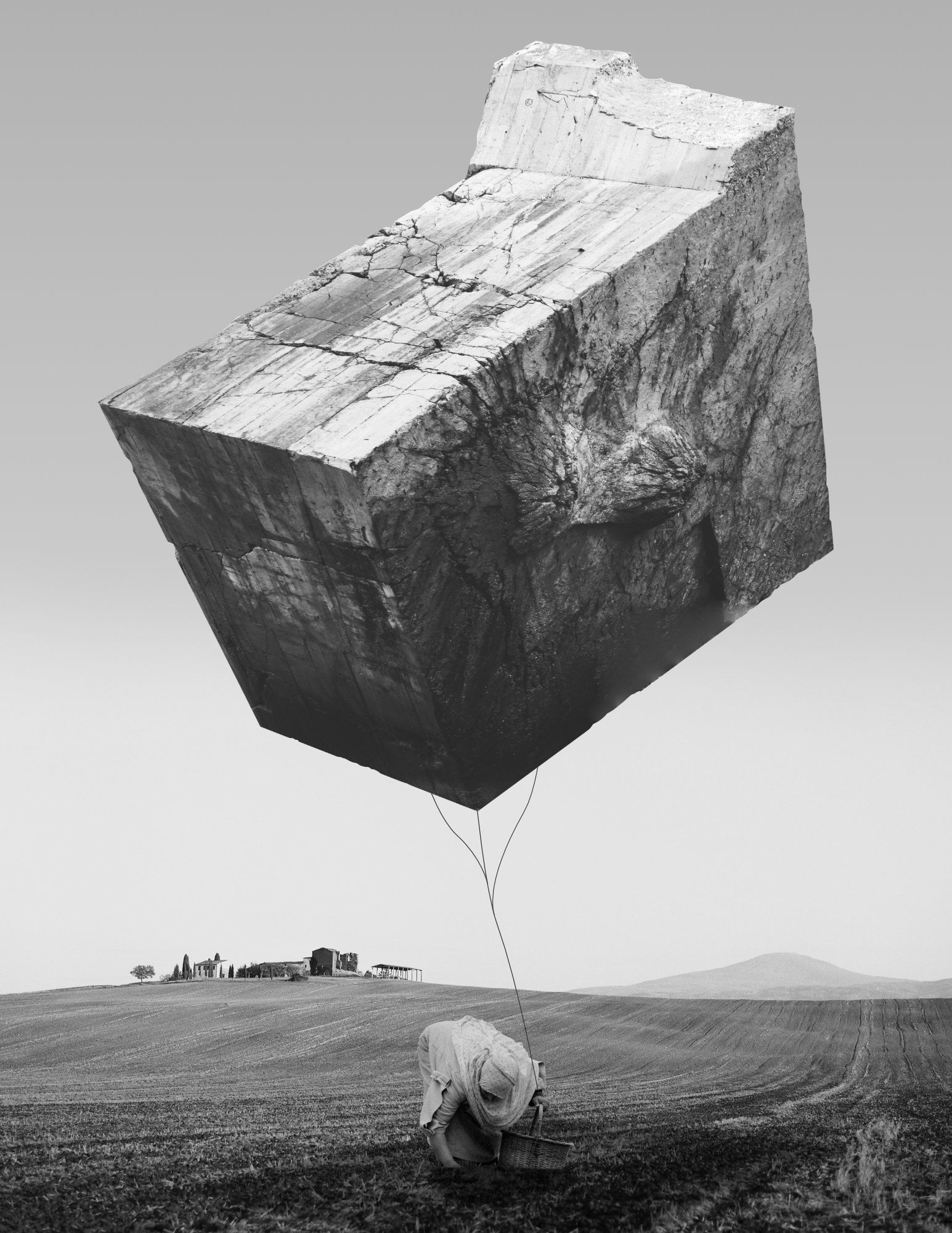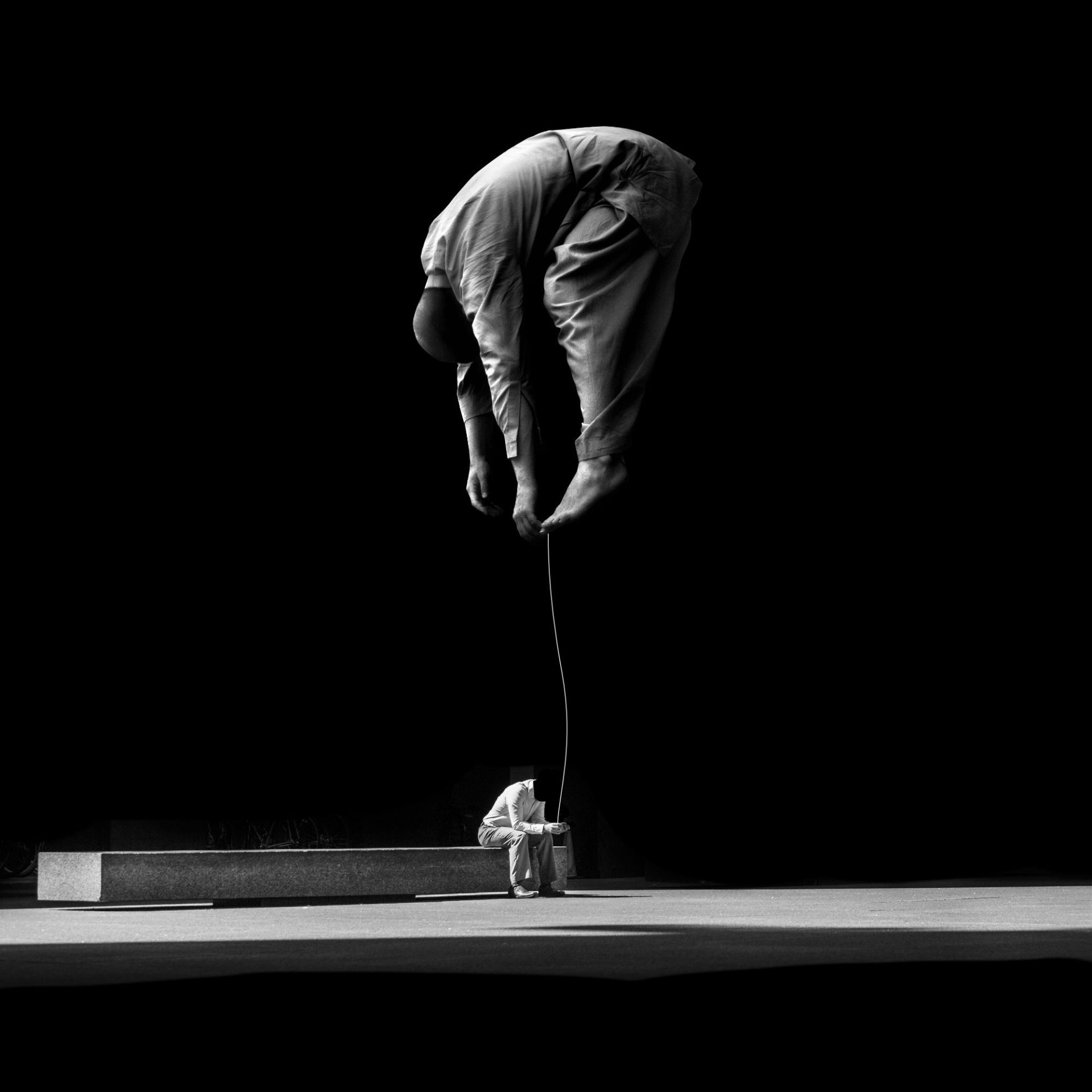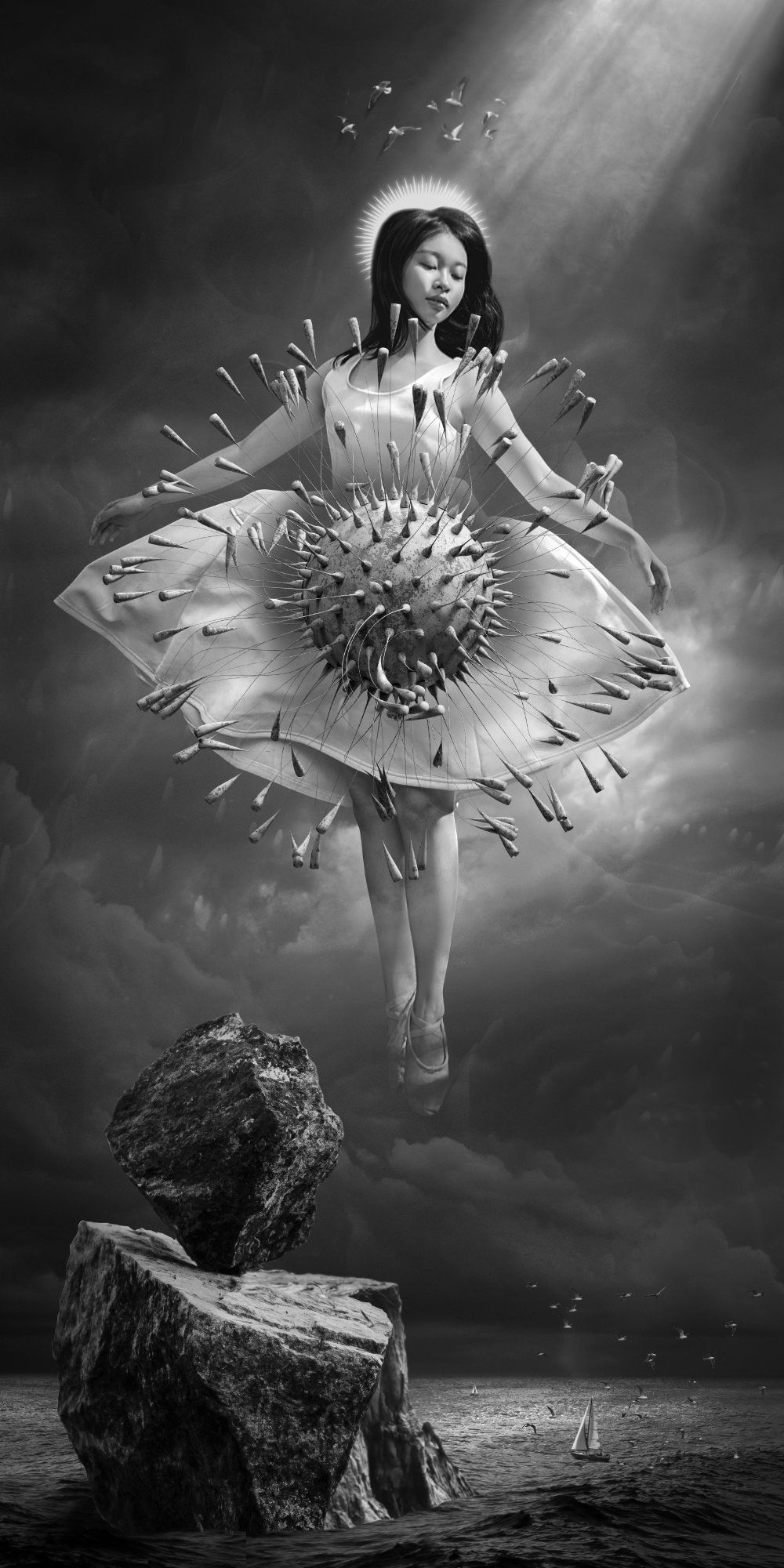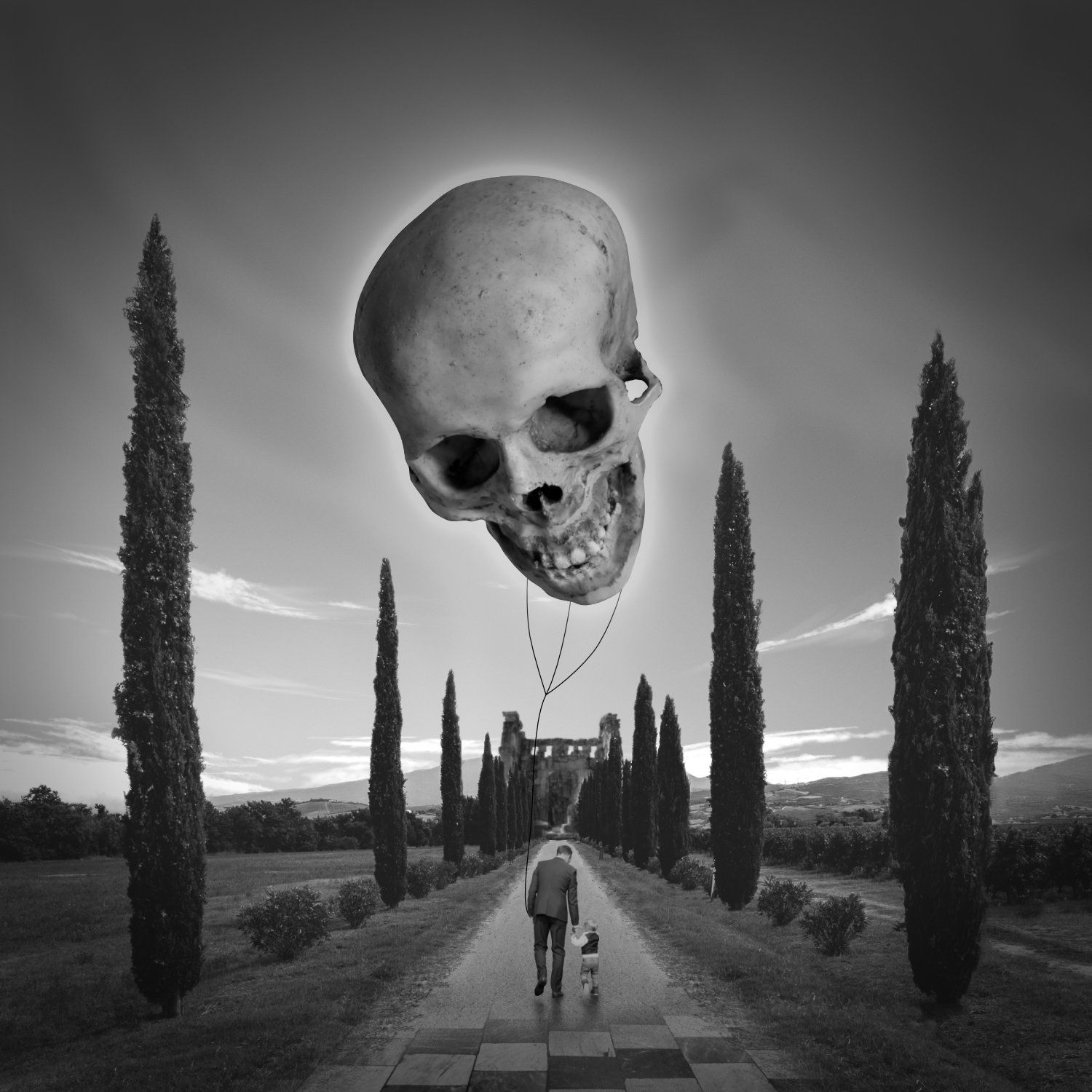A.D. STRANGE
A.D. STRANGE
THE ESSENTIA
These visual artefacts are made in the “Age of Anxiety” where truth and lies are indistinguishable, issues and attitudes are binary, and the perils of conflict and intimacy result in the separation of the self from the physical.
The images reflect our anxious world through a process of
digital painting,
photomontage
or “image dubbing.” These visual narratives are sojourns where time and memory, feelings and perspectives, manifest as physical places or situations showing the “Essentia” - the world as it really is.
We have a “digital self” which is irreconcilable with the natural world. The consequences are clear and profound - as we further augment ourselves with technology, we develop a greater lack of empathy and context for everything around us. We can no longer trust anything we see or hear and this is the root of our anxiety. As people retreat farther away from nature, the physical and psychological effects are the narratives I portray in my pictures. One example are objects or people being precariously tethered to one another. Humans are being transfigured without knowing what comes next. My path is to document this entropic journey.
The digital artist’s nature is to sample and be a Visual Sampler or a Visual Producer. I see the art making process as analogous to the Dub Producer making a musical recording. The late artist/producer Lee “Scratch” Perry, for example, both directed studio musicians and also assembles, modifies and manipulates the recorded sounds he used not just in real time, but also afterwards with overdubs, vocals and effects to colour the source material into his own musical vision. Even after all the craft and skill to create the original work, musicians may make additional “dub versions” of those works, allowing them to impose new perspectives onto the work.
There are also parallels between my approach and montage in film: both represent a way to portray multiple points of view or a journey through time or space that are then assembled into a unified image. Some of the sampled images within the montage are curated or randomly selected and juxtaposed to arrive at a new visual context in which the elements are transfigured beyond the artist’s intent. The artist no longer portrays a point of view, but elicits from the viewer the same response to the world that they had while making it, making the viewer a participant in the montage experience.
Tools can liberate or enslave us. Photography is a tool of technology and the artist. The viewer’s assumption that they are viewing a photograph is manipulated from the onset. In some works, the absence of colour is the absence of visual and emotional data. The removal of this data from the picture requires the viewer to immediately confront a discordant and binary world, then use light and shadow as the primary language for interpreting the image's content, context and meaning.
The photographic image has immediate connotations we associate with recorded history, reality and truth. So I subvert those collective associations. This effect is similar to semantic satiation - we might call it “visual satiation.” It’s photographic, but it’s not a photograph. Words and their meaning become disentangled from one another and conventions of perception regarding artefacts or historical documents can be easily destroyed by the context in which we see them. The term “photograph” no longer applies. However, if I was to say, “my images
are
photographs that I took with a camera,” it would only reinforce the need to scrutinize the work and your perception further. This process results in the viewer confronting the very mechanism that is the source of anxiety.



